Significance
Every year, Mazu (the patron goddess of seafarers) sets off on a pilgrimage from her home at Zhenlan Temple in Taichung’s Dajia District. This is the biggest Mazu pilgrimage in Taiwan in terms of the number of official participating brigades, or processional teams. It also has the largest number of followers who spontaneously join the procession along the way. The route of the nine-day, eight-night procession follows the path of early immigrants as they spread out across Taiwan. Apart from revisiting historical paths, the procession also strengthens the faith of local believers and helps them gain a deeper understanding of the significant cultural value behind this event. This ancient and elaborate sacrificial rite is a precious cultural asset. In recent years, the scale of the event has grown, becoming a classic example of how folk religion evolves in response to societal changes. In recent years, Dajia’s Mazu Pilgrimage has been named one of the world’s three biggest religious festivals by the Discovery Channel, and UNESCO has included Mazu beliefs and customs on the Representative List of the Intangible Cultural Heritage of Humanity.
History
The history of the Mazu Pilgrimage in Dajia dates back to 1730. In that year, Lin Yongxing, a native of Meizhou Island in China’s Fujian Province, immigrated to Taiwan with his family, and settled in what is now Taichung’s Dajia District. The family brought with them a statue of the Mazu deity from Chaotian Pavilion in Meizhou, which they placed on an altar in their own home. Later on, the statue was moved to its current location and a temple was built. Initially, worshippers embarked on a pilgrimage every twelve years to take the statue back to Chaotian Pavilion on Meizhou Island. During the years of the Japanese occupation, however, Taichung’s Daan Harbor was closed, cutting off communication between Taiwan and Fujian. To keep the tradition alive, worshippers decided to change the destination of the pilgrimage and the ceremony of endowing holy spirit (gēhuǒjìnxiāng) began to be held at Chaotian Temple in Yunlin County’s Beigang Township. Many years later, in 1988, the destination was changed again to Fengtian Temple in Chiayi County’s Xingang Township. Over time, the duration of the pilgrimage gradually increased, first from four days and three nights to eight days and seven nights, and eventually to the current nine days and eight nights. Today, the pilgrimage stops at nearly a hundred temples in twenty-one townships and districts spread throughout Taichung City, Changhua County, Yunlin County and Chiayi County. The total length of the round trip is around 300 kilometers. In 2008, the pilgrimage was named a significant intangible national cultural asset.
Special Features

1Mazu Pilgrimage from Zhenlan Temple, DajiaThe Mazu Pilgrimage in Dajia takes nine days and eight nights to complete. The designated schedule includes a set distance to be covered each day, the time of each ceremony, and the place where the procession stops and rests each night. Below are listed the ten ceremonies that take place throughout the pilgrimage.
1.“The Poe Divination Ceremony”( jiǎogǎo) – Chinese traditional Poe divination is performed in this ceremony, which takes place during the Lantern Festival on the fifteenth day of the first lunar month, to determine the starting date and time of the pilgrimage each year.
2.“The Raising of the Head Banner” (shùqí) – A long, vertical banner is raised to signify the start of all pilgrimage activities.
3.“Prayers for Protection” (qíān) – A prayer ceremony is held at 3 p.m. the day before the start of the pilgrimage to pray for a safe journey.
4.“Mounting the Palanquin” (shàngjiào) – The day before the start of the pilgrimage, a ceremony is held to invite Mazu to enter her palanquin.
5.“Departure of the Procession” (qǐjià) – The palanquin bearers lift up the palanquin bearing the deity to officially begin the pilgrimage.
6.“The Resting Ceremony” (zhùjià) – After the procession arrives at Xingang’s Fengtian Temple, Mazu’s statue is moved from the palanquin to the altar of the temple.
7.“Prayers for Blessings” (qífú) – At 5 a.m. the day following Mazu’s arrival in Xingang, a prayer ceremony for blessings is held at Fengtian Temple.
8.“Wishes for Longevity” (zhùshòu) – At 8 a.m., after the prayer for blessings is completed, worshippers express their birthday wishes to Mazu by chanting sutras, kneeling three times, and kowtowing nine times.
9.“The Return Ceremony” (huíjià) –Mazu is respectfully asked to return to her palanquin for the return trip to Zhenlan Temple.
10.“The Seating Ceremony” (ānzuò) – After nine days and eight nights, Mazu’s statue is returned to Zhenlan Temple. She returns to her original seat, and worshippers kowtow to her to thank her for her blessings.
2The Processional Order The brigades that accompany Mazu during the pilgrimage always march in a pre-determined order:
The brigades that accompany Mazu during the pilgrimage always march in a pre-determined order:
1. The Crier (baòmǎzaǐ)
2. The Head Banner, Head Lantern, and Mazu Flag bearers
3. The Leading Drummer
4. The Vanguard, including the first, second, third, and praise-giving incense bearers (zánxiāng)
5. The Embroidered Flag Brigade
6. The Tudigong and Maitreya Brigade
7. The Maitreya Brigade
8. The Prince Brigade
9. The Boy Brigade
10. The Horn (shàojiǎo) Brigade
11. The Solemn Guards
12. The 36 Honor Guards
13. The Suona Brigade
14. The Horse-head Gong Brigade
15. The Parasol Bearers
16. The Decree Flag Bearer
17. The Mazu Palanquin
18. The Bicycle Brigade
3The Poe Divination CeremonyPoe divination is a traditional Chinese divination method, in which moon-shaped wooden blocks are thrown and the way they land interpreted to determine divine guidance. Each year during the Lantern Festival, Poe divination is performed to determine the starting date and time of the Mazu Pilgrimage. Once the date has been decided, an incense grabbing competition (qiǎngxiāng) is held to determine which groups or temples can have the privilege of giving the first, second, and third incense in the pilgrimage. Since this also indicates the order in which they can worship Mazu and receive her blessings, it is considered a great honor to burn the first incense stick. Groups that receive the honor of bearing the incense later invite a folk arts troupe to give a performance to wish the Mazu deity a happy birthday. The performance troupes are also present throughout the pilgrimage.
The second ceremony of the Mazu Pilgrimage is the raising of the Head Banner (tóuqí). The day before the procession departs, Zhenlan Temple administrators bind the Head Banner to the temple’s left-side dragon pillar to notify worshippers that the pilgrimage is about to begin. They also post long pieces of yellow paper known as “incense notifications” (xiāngtiáo) at places along the route where the procession will stop or rest. These contain information about the pilgrimage schedule, such as the time at which the deity will arrive at or pass by a certain place.
4The Incense Grabbing Ritual (qiǎngxiāng)According to legend, the Dajia region had fifty-three villages during the Qing Dynasty that were willing to organize and pay for the Mazu Pilgrimage. This posed a potential problem since each village would only get a turn once every fifty-three years and not all villages could afford the expense by themselves. Thus, temple administrators decided to use the incense grabbing ritual to allow villages to compete for the privilege of financing the pilgrimage and lighting the “first incense (tóuxiāng),” “second incense (èrxiāng)” and “third incense (sānxiāng).” At the end of the pilgrimage, they are also given the honor of greeting Mazu upon her return, offering incense, and praying for blessings.
5The Crier (baòmǎzaǐ)The Crier leads the entire procession. He beats a gong to announce that Mazu is coming, so believers can prepare for her arrival. Most Mazu Pilgrimages in Taiwan have a crier in their processions. As with European court jesters, the appearance of the Crier is intentionally comical. He is attired in a traditional conical bamboo hat and straw raincoat, black pants, and a wool coat. He also wears black-framed glasses, and sports a handlebar mustache. The Crier smokes a pipe and drinks wine from a bottle gourd as he walks. He carries pig’s knuckles, leeks and other foods to symbolize abundance and longevity. Round, multicolored plasters are stuck to his legs to cover skin ulcers, to show that life is imperfect. He wears just one straw sandal, and one of his pant legs is rolled up.
6The Head Banner, Head Lanterns, and Mazu FlagsFollowing the Crier is the Head Banner accompanied by two lanterns. The square, apricot-colored banner in the front represents Mazu. The banner is embroidered with the words “Head Banner, Pilgrimage of the Celestial Queen of the Dajia Zhenlan Temple.” At the top of the banner pole is a red bottle gourd carved in wood adorned with two red pompoms. An incense stick is inserted in the gourd. The two Head Lanterns are located on either side of the Head Banner. They are meant to illuminate the way. The lanterns are painted with images of the Eight Immortals, and have the words “All is Peaceful during the Pilgrimage of the Celestial Queen of the Dajia Zhenlan Temple” on them. The Mazu flags follow behind the Head Banner and Head Lanterns. The yellow flag in the center represents Mazu, while the blue flags on either side are escorts. In the past, the bearer of the Head Banner was responsible for leading the procession and receiving groups and bringing them to pay tribute to the deity. This meant that the procession came to a standstill each time a group paid tribute. After the number of participating groups increased, the three Mazu flags were added into the procession to continue leading the procession during times when the Head Banner was otherwise occupied.
7The Embroidered Flag BrigadeEstablished in 1963, this brigade is made up solely of female worshippers. It was originally organized to increase the size of the pilgrimage ranks. The number of members has increased with each passing year until now it has become Taiwan’s biggest embroidered flag brigade. Female worshippers wishing to join the brigade can apply to Zhenlan Temple each year after the Lantern Festival. To prevent the brigade from becoming too big, there is a limit of 300 members each year.
8The Horn (shàojiǎo) Brigade and the Horse-head Gong BrigadeThe Horn Brigade and the Horse-head Gong Brigade march before the Mazu deity’s palanquin. Their purpose is to use their instruments to ward off evil spirits. In the early years of the procession, there were only two horns. Now, there are dozens. This type of horn is a brass instrument that produces simple, deep notes. The gong directs the brigade to play; whenever the gong rings thirteen times, the music begins. When the procession crosses over a bridge, or passes by a cemetery or a funeral, the gong is struck repeatedly to repel evil spirits.
9The Thirty-Six Honor Guards The Thirty-Six Honor Guards hold a pair of dragon-phoenix flags, twelve color placards, and eighteen traditional weapons. The honor guards are preceded by a dragonhead pole in front and trailed by a phoenix tail pole in back. They form a cordon around the palanquin whenever the procession passes by a funeral to prevent evil spirits from harassing the palanquin, or ghosts with grievances from blocking the path.
The Thirty-Six Honor Guards hold a pair of dragon-phoenix flags, twelve color placards, and eighteen traditional weapons. The honor guards are preceded by a dragonhead pole in front and trailed by a phoenix tail pole in back. They form a cordon around the palanquin whenever the procession passes by a funeral to prevent evil spirits from harassing the palanquin, or ghosts with grievances from blocking the path.
10The Kneeling Ritual (zuānjiàojiǎo) Along the pilgrimage route, worshippers set up incense burners to welcome the procession. Many also kneel in welcome. At times, the palanquin bearers will pass the palanquin over the bodies of kneeling believers. According to folk customs, this action is believed to bring blessings from Mazu.
Along the pilgrimage route, worshippers set up incense burners to welcome the procession. Many also kneel in welcome. At times, the palanquin bearers will pass the palanquin over the bodies of kneeling believers. According to folk customs, this action is believed to bring blessings from Mazu.
Reminders
The starting and return dates of the annual Mazu Pilgrimage are decided by a Poe divination ceremony that takes place during the Lantern Festival. The pilgrimage lasts nine days and eight nights. Since multitudes of pilgrims join the procession along the route, participants are advised to arrange their own lodging in advance. Many shops located along the route offer food and water to followers.
Panoramic
Directions